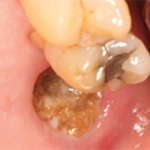If a bisphophonate is discontinued, the patient will need to be rescanned by hip DXA within two to four years, depending on the patient and overall risk of an osteoporotic fracture. It may also be useful to measure a biochemical marker of bone turnover such as urine N-telopeptide or serum C-telopeptide. Test for bone turnover when the patient stops the bisphosphonate medication and annually thereafter. If the marker increases from a premenopausal low-turnover rate to a higher postmenopausal turnover rate, it might be appropriate to obtain another hip BMD and consider reinstituting the therapy.
In deciding therapy duration, it is important that any patient who has suffered a low-impact fracture while on anti-resorptive treatment continue therapy. Almost none of the bone-active agents we use today for the treatment of osteoporosis cure the disease, but they do reduce the risk of fractures in most cases by 50% to 60%. Patients can still have fractures while on these medications, although they may have one fracture rather than two.
Safety and Selection
The safety of long-term bisphosphonates appears good. The most common adverse effects are gastrointestinal, including esophagitis, heartburn, abdominal pain, and diarrhea, but the length of use does not appear to change an individual’s risk for these side effects. Also, some patients experience acute adverse events, including fever and myalgias, with intravenous bisphosphonates and occasionally with oral bisphosphonates. But these events tend to be short lived and less severe with continued use of the medications.
There is not much data to support the use of one bisphosphonate over another. A study funded by Merck compared BMD and biochemical markers of bone turnover in postmenopausal women with osteopenia who were randomized to either alendronate 70 mg a week or risedronate 35 mg a week.3 Alendronate increased BMD of the spine and hip slightly more than risedronate. However, because all anti-resorptive agents have anti-fracture effects that are greater than their change in BMD, without fracture data it is not possible to make claim for a difference between the two anti-resorptive agents.
Another study—the risedronate and alendronate (REAL) cohort study—evaluated a large number of subjects from a health claims database, who were treated with either alendronate (n=21,615) or risedronate (n=12,215). The study endpoint was new fractures. The study reported that risedronate was more effective than alendronate for anti-fracture efficacy.4 There were 507 nonvertebral fractures and 109 hip fractures. Through one year of therapy, the incidence of nonvertebral fractures in the risedronate cohort (2.0%) was 18% lower (95% confidence interval [CI] 2%–32%) than in the alendronate cohort (2.3%). The incidence of hip fractures in the risedronate cohort (0.4%) was 43% lower (95% CI 13%–63%) than in the alendronate cohort (0.6%). These results were consistent across a number of sensitivity analyses such that, given the shortcomings of using a medical utilization database, they are probably valid.


